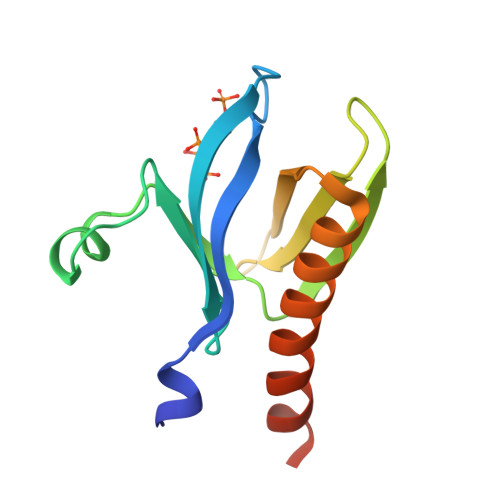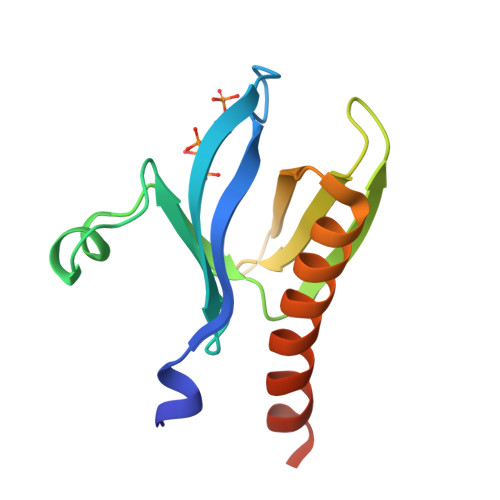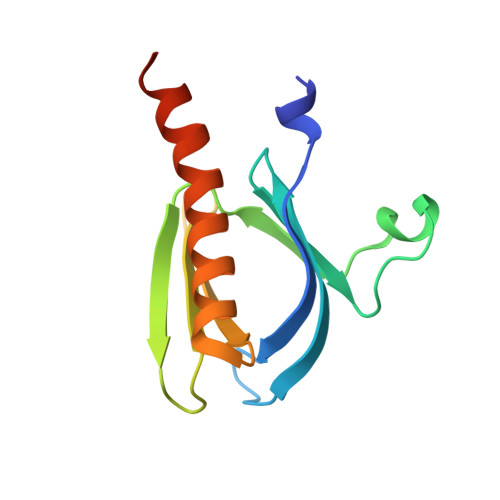A transforming mutation in the pleckstrin homology domain of AKT1 in cancer.
Carpten, J.D., Faber, A.L., Horn, C., Donoho, G.P., Briggs, S.L., Robbins, C.M., Hostetter, G., Boguslawski, S., Moses, T.Y., Savage, S., Uhlik, M., Lin, A., Du, J., Qian, Y.W., Zeckner, D.J., Tucker-Kellogg, G., Touchman, J., Patel, K., Mousses, S., Bittner, M., Schevitz, R., Lai, M.H., Blanchard, K.L., Thomas, J.E.(2007) Nature 448: 439-444
- PubMed: 17611497
- DOI: https://doi.org/10.1038/nature05933
- Primary Citation of Related Structures:
2UZR, 2UZS - PubMed Abstract:
Although AKT1 (v-akt murine thymoma viral oncogene homologue 1) kinase is a central member of possibly the most frequently activated proliferation and survival pathway in cancer, mutation of AKT1 has not been widely reported. Here we report the identification of a somatic mutation in human breast, colorectal and ovarian cancers that results in a glutamic acid to lysine substitution at amino acid 17 (E17K) in the lipid-binding pocket of AKT1. Lys 17 alters the electrostatic interactions of the pocket and forms new hydrogen bonds with a phosphoinositide ligand. This mutation activates AKT1 by means of pathological localization to the plasma membrane, stimulates downstream signalling, transforms cells and induces leukaemia in mice. This mechanism indicates a direct role of AKT1 in human cancer, and adds to the known genetic alterations that promote oncogenesis through the phosphatidylinositol-3-OH kinase/AKT pathway. Furthermore, the E17K substitution decreases the sensitivity to an allosteric kinase inhibitor, so this mutation may have important clinical utility for AKT drug development.
Organizational Affiliation:
Division of Integrated Cancer Genomics, Translational Genomics Research Institute, 445 N. Fifth Street, Phoenix, Arizona 85004, USA.

















